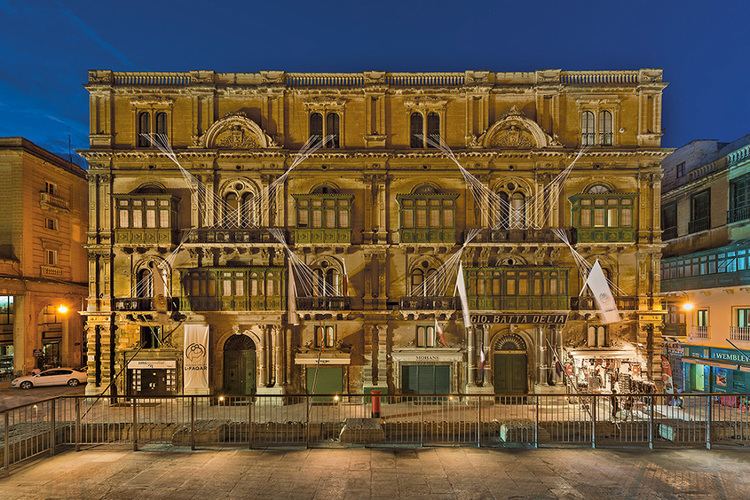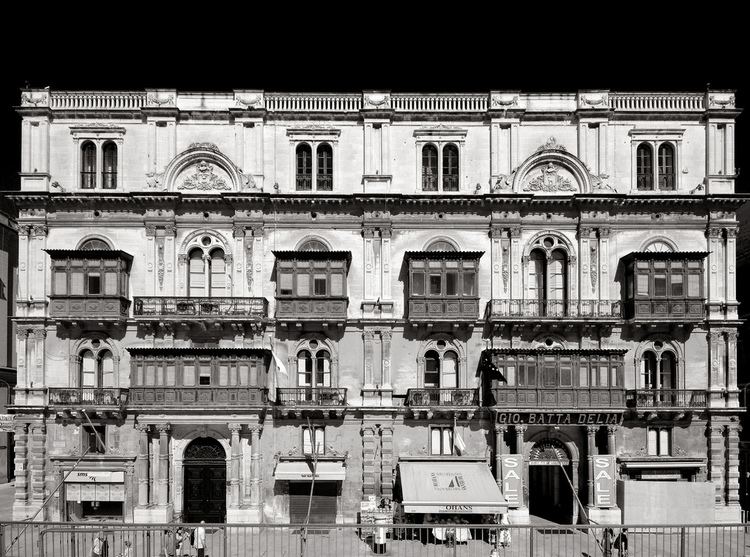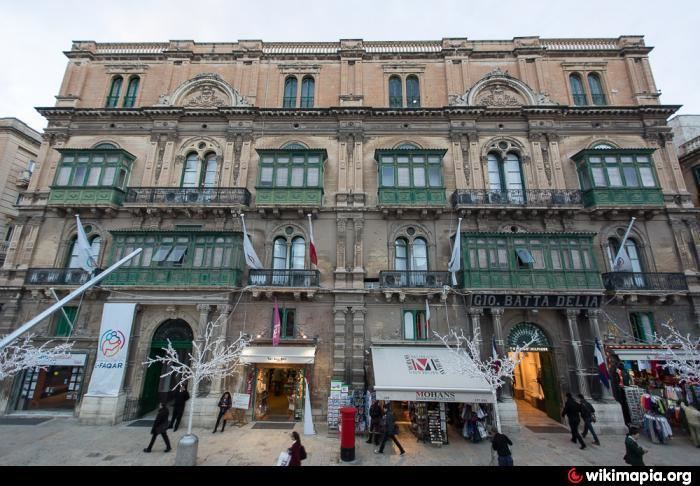Former names Palazzo Francia Named for John Louis Francia Opened 1876 | Status Intact Completed 1876 | |
 | ||
Similar Casa del Commun Tesoro, Banca Giuratale, Palazzo Parisio, Church of Our Lady of Pilar - Vall, La Borsa | ||
Palazzo Ferreria, officially Palazzo Buttiġieġ-Francia, is a palace found near the entrance of Valletta, the capital city of Malta. It was built in the late 19th century. The palace should not be confused with Villa Francia which is the official residence of the Prime Minister of Malta. Designed by Architect Giuseppe Bonavia, it was the first building to introduce timber balconies on the islands. It is a grade 1 national monument.
Contents

History

On the plot of the palace a former foundry of the Order of St John existed to manufacture the knight's armaments. The site was acquired from the government by Giuseppe Buttigieg and his wife Giovanna Camilleri. They later erected Palazzo Ferreria in the late 19th century. They paid the best skilled workmanship on the island. Visibly on the façade are the coat of arms of Buttiegieg and Camilleri. The palace was left as dowry to their daughter Teresa Buttigieg. She married Colonel John Louis Francia for whom the Palace got its name for a while. Francia was a Spanish citizen from the British colony Gibraltar, and the two met in Malta while Francia was on duty with the British army. Palazzo Ferreria is the second biggest palace in Valletta after the Grandmaster's Palace.

The Francia family resided at the palace until the end of World War Two, in 1947. The war had destroyed or partly damaged most buildings in Valletta. The Labour government, led by Dom Mintoff, rented part of the palace from the Francia for the Public Works Department, to reconstruct and restore Valletta from the war damage. The family kept a small part of the palace as an apartment which is now used as a Maltese government Ministry's office. The Francia sold the palace in 1979 to the government which was administered once again under Prime Minister of Malta Dom Mintoff. Today the lower parts of the palace consist of several shops.
Architecture

The architect of Palazzo Ferreria is Giuseppe Bonavia, who also designed the Lija Belvedere Tower and La Borsa. Bonavia is accredited to be the first architect to introduce the timber balconies on façades, beginning with the Palazzo Ferreria. This took place in the 19th-century and has influenced several architects and Maltese populace in general, something that is still visible and prevalent today. The palace is scheduled as a grade 1 national monument by the Malta Environment and Planning Authority (MEPA).
Gallery

